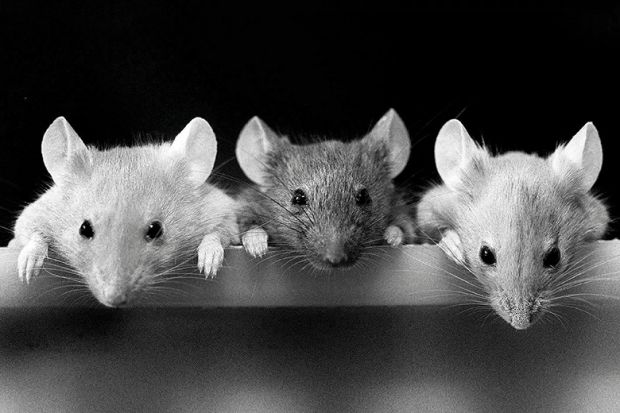My science novel, The Honest Look, deals with the pressures of research in the corporate environment. The moral of the story is that a fatal cocktail of financial gain, ambition, misplaced loyalty and sheer momentum can be powerful enough to trump personal integrity. Other “lab lit” novels have employed fraud to introduce tension into a profession that can be challenging to dramatise, such as Allegra Goodman’s engaging Intuition, where the publish-or-perish crush of modern cancer research tempts a young scientist into “trimming” his results to paint a rosier picture. When I wrote my tale, on the dole after a start-up biotech company’s precipitous bankruptcy, it was with the idea that fraud is an unfortunate but rare aspect of the scientific culture. Having read Nicolas Chevassus-au-Louis’ forensic assessment of the real scope of underhanded dealings in academia, my eyes have been opened to the prospect that truth really is stranger than fiction.
Scientific fraud itself is, of course, not a new phenomenon. Gregor Mendel’s pea heredity paper in 1865, although largely sound, reported numbers too good to be true, indicative of selective reporting or observer bias. The mathematician Charles Babbage wrote an entire book on the topic back in 1830, defining different categories of dodgy dealings and naming and shaming various bad apples – such as the Maltese knight who invented a species of shellfish just to raise his profile. But until recently the idea that fraud is rare was widely pervasive both within and outside the profession.
Things started to change in the 1970s when a series of high-profile American cases hit the media just as the Watergate scandal had ramped up levels of societal suspicion. The antics of dermatologist William Summerlin, who painted mice with black ink to make his skin graft experiments look successful, marked the beginning of this downward spiral of trust in a profession hitherto assumed to be impeccably honest. Several additional cases of duplicitous data, published in the highest-impact journals and widely reported, sealed the deal.
Yet while various governments began to take the threat seriously and create infrastructure to deal with such cases in the 1980s, insiders insisted that the problem was only a few black sheep “who could be separated from the herd”, and who were probably mentally “deranged” in some way.
Anyone who still believes this myth will be let down gently by the tough and evidence-based love that Chevassus-au-Louis doles out in subsequent chapters. One study showed that retractions in all disciplines increased elevenfold between 2001 and 2010, predominantly from high-profile journals in the medical field. Another study of articles indexed in Medline showed the rate of retraction for fraud (as opposed to honest error or author disagreement) had grown tenfold since 1975. This may be just the tip of the iceberg, if we consider a 2009 meta-analysis concluding that 2 per cent of scientists self-report having committed scientific fraud at least once. More worryingly, 14 per cent said that they knew of deception among colleagues. The percentage was even higher, up to 34 per cent, for the “grey zone” of activities such as knowingly using the wrong statistical test or not reporting results that don’t conform to the hypothesis. This could explain why researchers at Bayer found that only two-thirds of the promising academic papers that they followed up were reproducible in-house. The pharmaceutical company Amgen found a worse situation: only 11 per cent were reliable. Could this explain why so many new therapies fail in clinical trials, and why that failure rate has been increasing alongside the retraction rate?
There are many forms of fraud, from plagiarism, trimming away variable data and cosmetic touch-ups to selective reporting, wholesale fabrication and “p-hacking” (fiddling with the statistics until the result looks significant). Chevassus-au-Louis describes companies that will cheerfully write a fake paper using any random data you send them (as part of researching the book, he tried one out for himself) and charlatans who copy and paste others’ articles and submit them with their own names on the top. The gatekeeping is weak at the lower end of the journal prestige scale, a point made amusingly clear by people who have successfully published bogus papers to expose flaws in the system (including one composed of computer-generated nonsense, and another entitled “Get Me Off Your Fucking Mailing List”). Although the open access movement is widely seen to be a good thing for science, it has also spawned a legion of predatory journals with a financial incentive to accept anything, no matter how dubious.
But it’s not just the bottom-feeder journals that contribute to the contamination of the scientific literature. One of the most worrying aspects of the book is the picture that it paints of just how difficult it is to get a fraudulent paper retracted in even the most prestigious journals. The journal might not want to tarnish its reputation by highlighting its editorial failings, or might fear litigation from authors who don’t agree with the accusation. Furthermore, journals simply lack the time and resources to look into allegations, and must rely on institutional investigations, which often fail to reach a verdict, or even to get off the ground in the first place. In most cases, raw datasets are required to confirm fraud, and sometimes it is impossible to recover them, especially if the shamed researcher has left academia or simply refuses to cooperate. The end result is that many papers known to be fraudulent are still safely ensconced in the literature – and, worse, continue to be cited. This is true even of papers authored by the most high-profile of serial fraudsters, such as the physicist Jan Hendrik Schön or the stem cell biologist Woo-Suk Hwang. Even retraction is not always a solution: ridiculously, about one-third of retracted articles are not flagged up online, but only in the print version where few will notice.
So why this epidemic of fraud, and what can be done? Academic duplicity is ultimately caused by vested interests: the imperative to be hired, or promoted, or funded, or to placate a demanding supervisor. It can also be fuelled by the bias of advocates who wish to push a political agenda, and who crave that peer-reviewed stamp of approval. It is most common in biomedicine, chemistry and the social sciences, and less so in physics – possibly because the larger teams employed in physics can easily peer-correct. Meanwhile, fraud may be exacerbated in the life sciences because the rise of interdisciplinary research using increasingly complicated apparatus makes it harder to detect.
But the bottom line is that the more competitive science becomes, with an increasing number of people scrabbling for less money and fewer positions, the more pressure there will be to publish at any cost. Chevassus-au-Louis advocates a three-pronged attack on this deep systemic rot. The profession must embrace the wholesale sharing of all raw data, including “negative” results that now seldom see the light of day. It must stop using shallow bibliometrics, such as the impact factor or the h-index, to inform hiring, funding and promotion decisions. And, finally, science must simply slow down, and start valuing quality over quantity. A “fast food” culture has sickened the body of science, and more wholesome fare is required to restore its health.
Jennifer Rohn is principal research fellow of urological biology at UCL. Her most recent science novel is Cat Zero.
Fraud in the Lab: the High Stakes of Scientific Research
By Nicolas Chevassus-au-Louis; translated by Nicholas Elliott
Harvard University Press
232pp, £28.95
ISBN 9780674979451
Published 30 August 2019
The author
Nicolas Chevassus-au-Louis was born in Paris and brought up in a small country village about 50 kilometres away. He started studying molecular biology at the École Normale Supérieure de Lyon but soon became disappointed by “a lack of conceptualisation in a science which, to my taste, was then far too much like a collection of recipes”. He therefore switched to neuroscience while also taking courses in literature and history.
Going on to a doctorate, Chevassus-au-Louis worked in a laboratory at the Institut National de la Santé et de la Recherche Médicale, part of the Port Royal Hospital in Paris. His research there used rats to examine the links between epilepsy and anomalies in the development of the cerebral cortex but also involved collaborating with doctors, particularly neuropaediatricians, from whom he gained an understanding of “the differences of approach between clinical and biological research”.
After completing his PhD in 1999, Chevassus-au-Louis decided to switch track and now works as an investigative journalist writing about history and science for Mediapart.
Given that his book exposes much unscrupulous behaviour, had he encountered many obstacles in trying to get to the truth?
“Very few,” he replied. “All the researchers I contacted were happy to talk about this subject.” By 2013-15, when he was working on the French edition of his book, “the problem of scientific fraud was no longer denied, as it had been for so long”. The only problem was trying to figure out the details of a scandal involving a researcher called Olivier Voinnet, whose employers had prevented him speaking to the press. More recent developments had allowed Chevassus-au-Louis to incorporate full coverage in the English edition of his book.
Matthew Reisz
POSTSCRIPT:
Print headline: Rot goes deeper than you think
Register to continue
Why register?
- Registration is free and only takes a moment
- Once registered, you can read 3 articles a month
- Sign up for our newsletter
Subscribe
Or subscribe for unlimited access to:
- Unlimited access to news, views, insights & reviews
- Digital editions
- Digital access to THE’s university and college rankings analysis
Already registered or a current subscriber?








